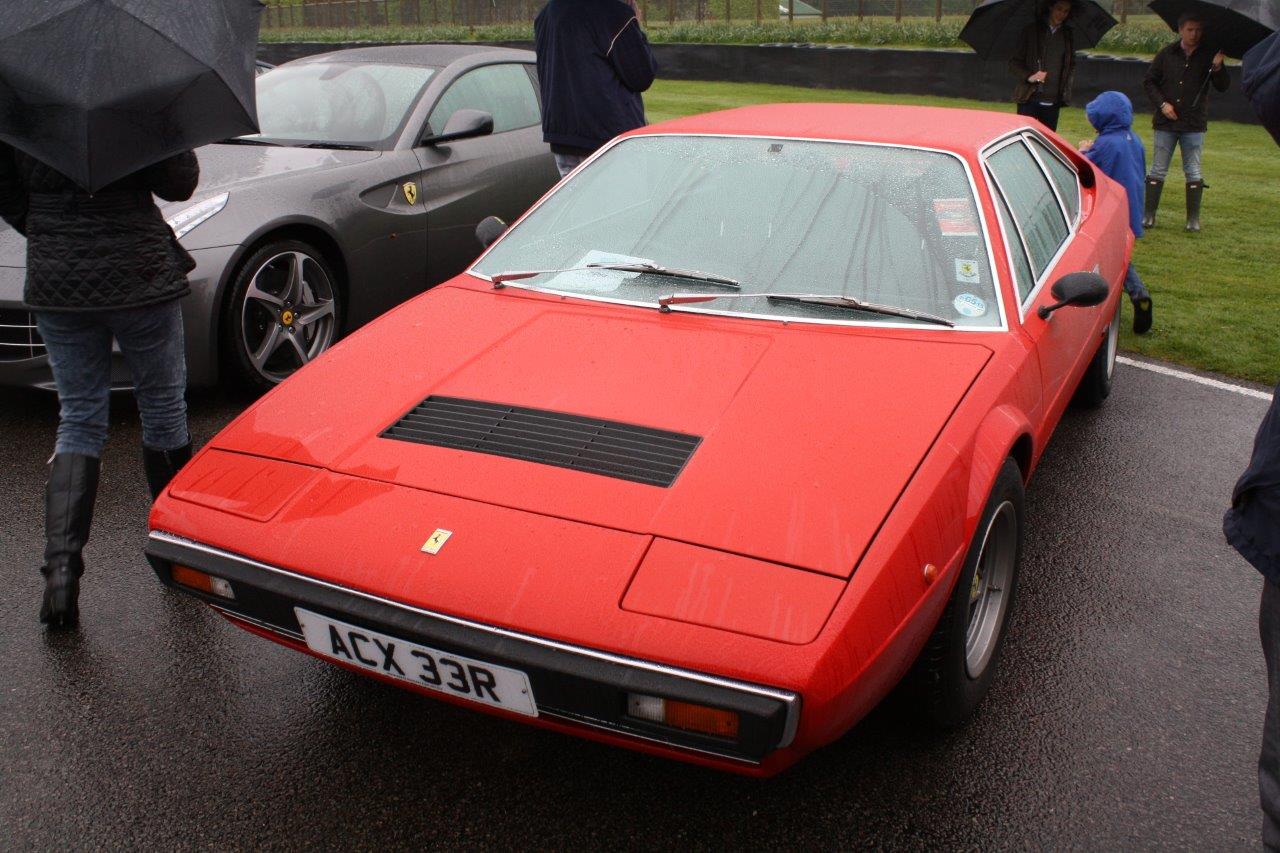-
Insurance
InsuranceAbout our productsLearn about insuringGet a quote Get current values, historical values, model history and more.
-
Valuation
ValuationHagerty valuation toolLook up a vehicle value Get current values, historical values, model history and more.
-
Events
EventsHagerty official eventsHagerty ClubhouseEvent calendar
-
Entertainment
EntertainmentMore to explore
-
Drivers Club
Drivers ClubDrivers Club
- Portal login
1974 Ferrari 308 GT4
Base 2+2 Coupe 2.9 L
Vehicle values by condition
Fair
Condition 4
£25,000
#4 cars are daily drivers, with flaws visible to the naked eye. The chrome might have pitting or scratches, the windshield might be chipped.
Good
Condition 3
£30,100
#3 cars could possess some, but not all of the issues of a #4 car, but they will be balanced by other factors such as a fresh paint job or a new, correct interior.
Excellent
Condition 2
£44,300
#2 cars could win a local or regional show. They can be former #1 cars that have been driven or have aged. Seasoned observers will have to look closely for flaws.
Concours
Condition 1
£65,900
#1 vehicles are the best in the world. The visual image is of the best car, unmodified, in the right colours, driving onto the lawn at the finest concours.
Insurance premium for a
1974 Ferrari 308 GT4 Base 2+2 Coupe 2926
valued at £30,100
£211.23
/ year*
History of the 1973 - 1979 Ferrari 308 GT4

1973 - 1979 Ferrari 308 GT4
Ferrari introduced the 308 GT4 in 1973 under the Dino name as a mid-engined 2+2 sibling to the successful Dino 246 GT, and it represented several firsts for the company. It was the first and only time that Bertone was to style a road-going production Ferrari, and as such its wedge shape is distinctly different than the Pininfarina styled cars that came before and after it. It was also the company's first mid-engined 2+2. Finally, the Dino 308 GT4 represented Ferrari’s first use of a V-8 in a road car. This brand new 3-litre quad-cam, 90-degree V-8 motor had four Weber carburetors and generated 250hp. The engine was mounted with its 5-speed gearbox transversely behind the rear seats. The chassis was based on that of the Dino 246 GT, but with a longer, 100.4-inch wheelbase, and independent upper and lower wishbone suspension all round.
A total of 2,826 Ferrari Dino 308 GT4s were built from 1973 to 1980. Production can be roughly divided into three series. Series I cars were produced in 1974 and 1975, producing 240hp in non-catalyst form, and were the lightest cars in the series. As a result, they are considered spirited performers to this day. These cars carry a “Dino” badge on them, and may or may not have a Ferrari badge as well. Series II cars were built until the end of 1977, had a larger front grille area, and different details in the dashboard and glovebox area. Finally, Series III cars were produced until 1980. A factory sunroof was available throughout the run but appears to be more prevalent on these later cars, and a rear storage shelf in place of the rear seats was optional.
Today, the Ferrari Dino 308 GT4 offers a lot for the enthusiast. The car is a wonderful handling, mid-engine Ferrari with plenty of room for two occupants and their luggage, yet also inspires its driver with a wonderful carbureted V-8 sound just behind the cabin. Like all cars in the 308 series, the GT4 requires a timing belt service every four to five years, but this is not nearly the maintenance or financial headache that folklore might indicate, provided the car has a strong service history. This can be problematic since the 308 GT4 languished in the classic car doldrums for many years and low values meant that often maintenance regimes were skimped. Check before purchase.
In recent years, the Ferrari Dino 308 GT4 has seen a resurgence in interest, buoyed by the popularity of the Ferrari Dino 246 GT and the Ferrari 308 GTB, both of which have risen significantly in value. Alternative cars from the same era are rare, but the Maserati Merak SS offers the closest in terms of both engine, handling, and looks.
Hagerty Newsletter
Get your weekly dose of car news from Hagerty UK in your inbox

ADVERTISEMENT